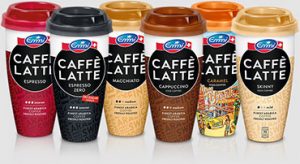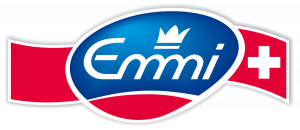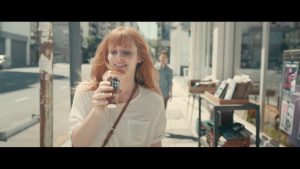I choose coffee as my drug topic because before we talk about coffee as a drug I did not considerate it a drug. I come from a strict family, where drugs are not allowed, not matter if it is a licit or illicit drug. The only time my parents drink alcohol are on holidays, but the funny thing is that they both need to drink a cup of coffee to start their morning. I do not think they realize that coffee is also a drug, and the same thing happened to me. I did not see anything bad on drinking coffee every morning, as my parents. However, now I know what caffeine really means, as we talk in class, coffee is a simulant that increase the functioning of the nervous system. I also know that companies spend billions of dollars to get more people as much they can. An example, is how “digital [advertising] made up 36.7% of total media ad spending in 2016 and will account for around half by 2021. Mobile will be the main driver of this growth, comprising 70.3% of digital spend in 2017” (eMarkete, 2017). Being expose to all these advertising is making hard to not consume drugs.
Another reason I decided to write this blog about coffee is because I want other people to know that coffee advertising are no reflecting what coffee really is, and then they can take their decision about drink or not coffee. I am not saying coffee should not be allow because it’s bad, but people have the right to see the coffee as a drug and not just as a solution to everyday problem. To write this blog I decided to use a video ad from Lavazza called “Lavazza ‘Ode To Coffee’ commercial 2017,” by Lavazza https://www.youtube.com/watch?v=dBwMof3k14U
I choose this video ad because it was made this year (2017) that means it recent, it was post on Apr 5, 2017. Another reason is because this a good example on how coffee companies sell their drugs without telling to their customers that coffee is a drug, but a solution to any problem, or situation.
More 120 Years of History
- Everything started when Luigi Lavazza opened Lavazza’s first grocery shop in via San Tommaso, in Turin, in 1895. He discovered the different origins and characteristics of the coffee plant, and studied the art of blending to meet the tastes of customers, creating the blends.
- It was just after World War I and Turin was bustling: the Lingotto plant entered into production for Fiat, and the Lavazza grocery shop became a small business.
- In this same period (1927) Lavazza started to use Pergamin: a pack with two layers of paper that maintains the fragrance of coffee.
 The first Lavazza logo was created in 1946 by the Aerostudio Borghi in Milan. The central letter “A”, larger than the other letters, still identifies us today.
The first Lavazza logo was created in 1946 by the Aerostudio Borghi in Milan. The central letter “A”, larger than the other letters, still identifies us today.- The coffee we buy today is still in vacuum packs. The first time it was packed this way was in 1950.
- This made long-term conservation, and hence much wider distribution, possible.
- In 1959, we launched Lavazza’s first decaffeinated coffee: DEC.
- The largest roasting plant in Europe, in Settimo Torinese was built in 1965.
- The world’s largest coffee school existing today was created during the 1979’s, under the name Luigi Lavazza Center for Studies and Research into Coffee.
- In 1989, the Vending sector was formed with the Lavazza Espresso Point system: an espresso machine that uses single-serve pre-packed coffee capsules.
- In 1982, Lavazza Coffees Ltd. was set up in London in 1990 to spread Italian coffee in the UK.
- In 1993, art, photography and design were included in advertising.
- 2004 saw the opening of the Giuseppe and Pericle Lavazza Foundation, a non-profit organization that seeks to improve people’s living conditions in coffee-growing countries.
- The main project is called: “Tierra.” In this project we have permanently improved, in eight countries, the living conditions of more than 3,000 caficultores, boosting economic growth, improving their lifestyle and introducing new, more ecological and profitable agricultural techniques.
- 2012- The Sustainability Report, illustrated the results of the commitment in the sustainability field.
- we have launched a programmer aimed at assessing the environmental performances of various key products

- we have launched a programmer aimed at assessing the environmental performances of various key products
- In 2004, the Lavazza calendar took coffee into space, with the photographs of Thierry Le Gouès, inspired by Barbarella and the pop and science fiction imagery of the Sixties and Seventies.The same year, Lavazza took Italian espresso onto the International Space Station, in collaboration with Argotec and the Italian Space Agency (ASI).
- The Lavazza coffee we drink today is the result of his idea: combining coffees from different parts of the world (Asia, Africa, Brazil, Sud-America, etc.). These coffees are harvested, processed, mixed and roasted to create many different and balanced blends, and satisfy the taste of every one of us.
- Lavazza celebrated 120 years of history in 2015, where Lavazza was presenting the first Lavazza compostable
- capsule for preparing a perfect Italian espresso, respectful of the environment.
- In 2017- Lavazza is celebrating 122 years of being not just in the Italy marker but around the world.
Is Children a target of Lavazza Coffee?
The audience of Lavazza is everyone who needs a solution to any problem in their lives, which mean everyone. The song of this ad is basically about when is a good idea to have a cup of coffee, for example when you need an advice, before texting you ex, when you need to convince police officers, impress a some you like, etc. but the example that most caught my attention is when I the minute 0:58 appears a cartoon astronaut. In this cartoon they represent their achievement to take “Italian espresso onto the International Space Station, in collaboration with Argotec and the Italian Space Agency” (ASI). This make me wonder why decided to add a cartoon in this ad, is it because children like cartoons? Or is it because they want people to think that this commercial is innocent. I feel that this a technique that reflex innocence, because most of cartoons are for children, and if this ad has a cartoon it means it nothing is wrong about it? Because of this cartoon I will say that the intended audience is not just everyone who needs a solution to their problems but also children.
Is Caffeine Addictive?
The active ingredient in coffee is caffeine, which means coffee is a stimulant and a psychoactive drug. That means, caffeine “acts primarily upon the central nervous system where it alters brain function, resulting in temporary changes in perception, mood, consciousness and behavior” (ScienceDaily). That is one reason people experiment paranoid, anger, high energy, and other synthons after drinking a cup of coffee or any other stimulant.
One of the physiological effect in our bodies after drinking caffeine is that if “you stop taking caffeine abruptly, you may have symptoms for a day or more, especially if you consume two or more cups of coffee a day” (WebMD Medical, 2017). You can experiment many symptoms of withdrawal from caffeine, some of them are headache, fatigue, anxiety, irritability, depressed mood, difficulty concentrating and other symptoms. However, caffeine does not cause serious withdrawal or harmful drug-seeking behaviors as street drugs or alcohol.
Based on Patrick Di Justo, claims in the article “Here’s everything that’s hiding in your cup of coffee” that “caffeine’s primary mechanism in the brain is blocking the effects of an inhibitory neurotransmitter called Adenosine (Patrick Di Justo, 2015). That means that when stimulants like coffee block neuroreceptotors for the sleep chemical adenosine you are awake.
On the other hand, Caffeine “doesn’t threaten your physical, social, or economic health the way addictive drugs do,” (myth and fact) for example, alcohol. For this reason, most experts don’t consider caffeine dependence a serious addiction. But this does not mean that you do not spend a lot of money drinking coffee every day. “Americans on average, each American drinks 3.1 cups of coffee a day, adding up to $40 billion spent annually on coffee in the U.S. alone” (Katy Osborn, 2015).
Some Advertising Strategies
- The main technique that I see in this video ad is that they are not targeting only one kind of person but suggesting that a cup a coffee is the solution to everything, at any time, that way they are targeting a bigger group of people as possible.
- Another strategy is that they used a soft and relax tone in their music. Which I think is contradictory to what caffeine really does on the body. But this music make the audience think that no matter how bad their day is going, coffee will fix everything.
- The video has humor, which I think is a good strategy because people are more likely to watch the whole video if they are have fun with it.
- As English is my second language I always like to have subtitles on everything I watch. I think their strategy on having subtitles of the song is because they are considering not just one language/culture but because Lavazza coffee is all around the world they want to make sure that their ads are understanding.
This video ad does not explain the ingredients or what the side effects of caffeine are. They just focus on how coffee is “great.’
In conclusion
Even though I know caffeine affects can be dangerous, as coffee drinker I think is hard to decide whether or not I will recommend to my friend or family members think coffee. I think my answer will be that they can decided after I explained the cons and pros of caffeine as a stimulant. After, I will recommend then to drink coffee in small amounts, because based on my research caffeine is not addictive and even though it “does not cause the severity of withdrawal or harmful drug-seeking behaviors as street drugs or alcohol,” (Patrick Di Justo, 2015) it can cause symptoms of withdrawal as headaches, fatigue, anxiety, etc. when you stop drinking coffee.
However, coffee a good way to increase is energy. Based on the article “Caffeine Myths and Facts” by WebMD a good method to drink this stimulant is to drink it before 2:00 pm, because “caffeine has a relatively short half-life,” which means “after eight to 10 hours, 75% of the caffeine is gone” (WebMD Medical, 2017) from the body. Another point to keep in mind is that if you are trying to save some money, drink coffee everyday might not be a good idea.
References:
Di, P. (2015, MAR 18). Here’s everything that’s hiding in your cup of coffee. Retrieved from the website Business Insiders http://www.businessinsider.com/chemicals-in-coffee-2015-3
ScienceDaily. Psychoactive drug. Retrieved from the website ScienceDaily https://www.sciencedaily.com/terms/psychoactive_drug.htm
WebMD Medical. (2017, April 30). Caffeine Myths and Facts. Retrieved from the website WebMD
https://www.webmd.com/diet/caffeine-myths-and-facts#1
Osborn, K. (2015, September 29). Here’s where your coffee habit costs the most. Retrieved from the website Money http://time.com/money/4053704/coffee-costs/
eMarkete.(2017, March 15). US ad spending: The eMarketer forecast for 2017. Retrieved from the website eMarkete https://www.emarketer.com/Report/US-Ad-Spending-eMarketer-Forecast-2017/2001998
Lavazza. Timeline. Retrieved from the website http://www.lavazza.com/en/lavazza-world/company/history/
By Karina Marroquin, October 25, 2017.





